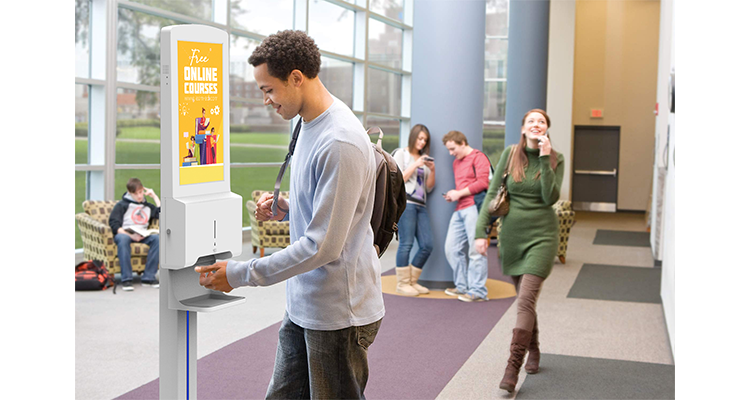Lessons Learned by a Digital Signage Manufacturer During COVID-19

By Chloe Weaver
Allsee Technologies
To say that the coronavirus pandemic has caused problems for the digital signage industry would be an understatement. As a digital signage manufacturer, these past few months have been some of the hardest in the company’s history. But this extreme situation has also taught us a lot about how we should operate, not only during crises but also on a day-to-day basis when things return to some kind of normality.
I wanted to share the challenges we faced, how we overcame them, and the lessons we learned along the way — in the hopes that our experiences can help other companies survive these tough times.
Our biggest problem, which was in no way unique to us or the digital signage industry, was a lack of cash flow. With the closure of retail stores, visitor attractions, office buildings, schools and universities came a slump in demand for digital signage. As orders dried up for our network of distribution, reseller and integrator partners, so did our incoming revenue.
The greater economic crisis only exacerbated this. With the U.K. predicted to enter a recession, the value of the pound plummeted and in turn, our profit margins decreased significantly.
At this point, we were stuck between a rock and hard place. We could either compensate for our lack of orders and reduced profits by increasing our prices — a route taken by many other digital signage manufacturers — or react to market demands reported to us by our partners and develop new innovations. The former would have damaging consequences for our network of partners, who had, of course, been hit as hard as we had by the pandemic. The latter was a much bigger risk and could mean potentially not meeting company growth targets for 2020.
We decided to maintain our pricing and instead asked our suppliers for extended credit terms and higher credit limits, which helped us fund the development of new products. Long story short, it paid off. By listening to our partners and demonstrating that we were sympathetic to their tough financial situations, we strengthened these relationships and built trust in our company. And as a result, despite our sales being significantly worse than last year in March, April and May, we actually managed to achieve growth by June.
From this, we took our first important lesson: Don’t just think about short-term profit losses, prioritize maintaining and building your customers’ trust and loyalty to reap bigger long-term rewards.
Another problem was a lack of interest, not only in some of our existing products but also in upcoming products that were due to be launched in 2020. For months, we developed things like new forms of advertising displays, new types of touch screens and new devices that could be used in conjunction with our displays to improve collaboration in meetings. But with retail stores closed for months, widespread fears about touching anything in a public space, and many face-to-face meetings going virtual, nobody was interested in these kinds of solutions anymore.
Ultimately, as painful as it was to push back product launches that we’d been working on for so long, we knew that this was our only choice. We needed to listen to what people wanted, not just what we had planned. So we reevaluated the situation, looking at the most recent trends in the industry and asking our partners for feedback about what end users wanted.
Based on this, we, like a few other companies, developed new solutions specifically designed to tackle issues caused by coronavirus. (We combined a hand sanitizer dispenser with digital signage and created a display with temperature checking and mask detection capabilities.)
After this, we continued with some of our planned product launches but completely remodeled our marketing strategies. For each, we asked ourselves: “Okay forget what we previously thought these displays would be used for, how are they useful in the current situation?”. For example, during the pre-launch phase of our new Outdoor Battery-Powered A-Boards, we noticed that many of our partners were selling them into locations such as supermarkets to display the latest government guidelines and as part of customer counting systems. We used this insight to influence the way we marketed this new product’s features, targeting new challenges end users were facing with a solution that was already developed.
This adaptability definitely contributed to keeping the company afloat during our most difficult months. By June, our sales had gone from being practically non-existent in the first week after lockdown to being even better than last year.
This taught us another valuable lesson: Paying attention to changing market demands and adapting your strategy accordingly is essential to success, especially when the industry is evolving so rapidly.
Now, with cases dropping day-by-day in the U.K. and many businesses opening their doors again, it seems promising that things are starting to return to normal. By taking these lessons about prioritizing customer relationships and adaptability to heart, I genuinely believe that companies in the digital signage industry can come out of this crisis even stronger than before.




